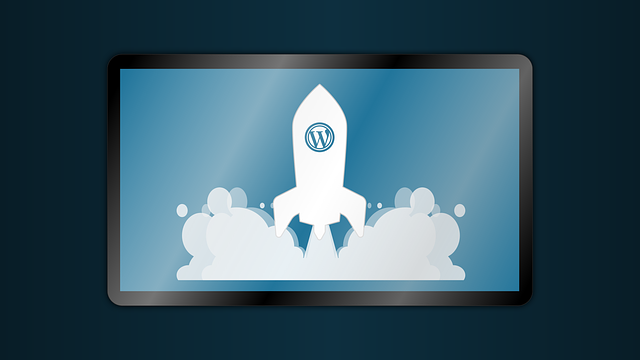WordPress and PHP: A Detailed Examination
WordPress and PHP are two cornerstones of modern web development. They are critical tools in creating dynamic and robust websites. WordPress is a content management system (CMS) that powers over 40% of websites on the Internet, while PHP (Hypertext Preprocessor) is the scripting language that underpins it. In this article, we will delve into the intricacies of both WordPress and PHP. We will explore their history, features, and the synergy between them.
Historical Context and Evolution
Launched in 2003 by Mike Little and Matt Mullenweg, WordPress aims to simplify the process of web publishing. Initially conceived as a blogging tool, WordPress has evolved into a full-fledged content management system (CMS). It is capable of powering a wide range of websites, such as blogs, e-commerce platforms, and informative websites. Its success is attributed to its open-source nature, user-friendly interface, and robust community of developers who contribute to its extensive repository of plugins and themes.
On the other hand, PHP was created by Rasmus Lerdorf in 1994. Originally designed as a set of Common Gateway Interface (CGI) binaries written in C, it evolved into a server-side scripting language to enhance web development capabilities. PHP's syntax draws heavily from C, Java, and Perl, making it relatively easy to learn for those familiar with these languages. Over the years, PHP has undergone significant transformations, with PHP 7 and 8 introducing substantial performance improvements and new features.

WordPress Architecture
WordPress is built on a modular architecture that leverages PHP as its core scripting language. The architecture can be divided into several key components.
1. Core
The core of WordPress includes important files and the codebase required for the platform to operate effectively. Primary written in PHP, the core integrates HTML, CSS, and JavaScript to manage front-end interactions. This foundational component is pivotal in processing user requests, executing database operations, and generating web pages dynamically. It includes key functionalities such as the main query, template hierarchy, and APIs that facilitate plugin and theme integration. By maintaining a structured and efficient core, WordPress ensures robust performance, security, and compatibility across a wide range of web environments. It provides a solid foundation for extending and customizing the CMS.
2. Themes
Themes control the appearance and layout of a WordPress site. They are essentially a collection of templates written in PHP, CSS, and HTML. Themes can be customized to change the look and feel of a site without altering its core functionality.
3. Database
WordPress uses MySQL (or MariaDB) as its database management system. The database stores all the content, settings, user information, and other data required by the site. PHP is used to interact with the database using queries to retrieve and manipulate data.

4. Admin Dashboard
Commonly referred to as the backend, the WordPress admin dashboard serves as the control center for website management. Built using PHP and JavaScript, the interface is designed to be user-friendly and accessible, even for those with minimal technical knowledge. Through the dashboard, users can effortlessly manage content by creating and editing posts and pages, organizing media files, and moderating comments. It also allows for the seamless installation and customization of themes and plugins, enabling users to tailor the appearance and functionality of their site to suit their needs. Additionally, the dashboard provides access to critical site settings, such as user roles and permissions, SEO configurations, and performance monitoring tools. With its comprehensive yet intuitive design, the admin dashboard empowers users to efficiently maintain and enhance their WordPress websites.
5. Plugins
When it comes to WordPress, it is all about plugins. They are essential to the flexibility and extensibility of WordPress. Users can tailor their WordPress websites to specific needs without altering the core code. Written in PHP, plugins can introduce new features or modify existing functionalities seamlessly. For example, the Yoast SEO plugin enhances search engine optimization by providing tools for keyword optimization and sitemap generation. Another popular plugin is WooCommerce. It transforms WordPress into a fully functional e-commerce platform that enables product listings, shopping cart management, and secure payment processing. With thousands of plugins available in the WordPress Plugin Directory, users can effortlessly extend their site's capabilities to meet diverse requirements.
PHP's Role in WordPress
PHP is the backbone of WordPress that drives the server-side functionality. There are some specific ways PHP is utilized within WordPress.
1. Dynamic Content Generation
PHP scripts in WordPress generate HTML dynamically. When a user requests a page, PHP retrieves the necessary content from the database and constructs the HTML to be sent to the user's browser.
2. Template System
WordPress's templating system relies heavily on PHP. Themes include PHP templates for different parts of the site, such as headers, footers, sidebars, and content areas. PHP functions and conditional statements within these templates control what content is displayed and how it is formatted.
3. Plugin Development
Plugins are written in PHP, and they can hook into WordPress's extensive API to extend or modify its functionality. This allows developers to create custom features, from simple widgets to complex integrations with third-party services.
4. Database Interactions
PHP is used to perform CRUD (Create, Read, Update, Delete) operations on the WordPress database. The WordPress database abstraction layer provides functions that simplify these operations, ensuring compatibility and security.
5. Security
PHP plays a crucial role in WordPress security. Core functions sanitize user input and escape output to prevent common vulnerabilities like SQL injection and cross-site scripting (XSS). Additionally, PHP handles authentication and authorization processes, ensuring that only authorized users can access specific parts of the site.

Advantages and Challenges
The combination of WordPress and PHP offers a wide range of advantages that have contributed to their widespread adoption and success in the web development world. One of the primary benefits is ease of use. WordPress's intuitive interface is designed to be accessible even to those without technical expertise. Users can create and manage websites with minimal effort. PHP complements this by being a straightforward scripting language with a syntax that is easy to learn. This makes it approachable for new programmers, who can quickly get up to speed with developing and customizing WordPress sites.
Flexibility and extensibility are other significant strengths of the WordPress-PHP combination. Driven by PHP, WordPress's architecture allows limitless customization through its plugin and theme systems. Developers can create solutions tailored to specific needs, whether it is adding unique functionalities with custom plugins or designing unique looks with custom themes. The vast repository of plugins and themes available means that most requirements can be met without starting from scratch. This modularity also means that as a site’s needs evolve, new features can be integrated seamlessly.
Moreover, both WordPress and PHP benefit from being open-source projects with large and active communities. Driven by contributions from developers worldwide, this communal aspect ensures continuous improvements and innovations. There are abundant resources that assist both developers and users, such as tutorials and forums. This extensive support network helps in troubleshooting issues and staying updated with best practices.
However, there are challenges associated with using WordPress and PHP. Performance can be a concern, especially for poorly optimized sites. Despite significant performance enhancements in PHP versions 7 and 8, a WordPress site with numerous plugins or poorly coded themes can suffer from slow loading times. This necessitates careful optimization and possibly the use of performance-enhancing tools such as caching mechanisms and Content Delivery Networks (CDNs).
Security is another critical issue. The widespread popularity of WordPress makes it a frequent target for hackers. Ensuring the security of a WordPress site requires constant vigilance, including regular updates and adherence to secure coding practices. Using security plugins can help to protect against common vulnerabilities such as SQL injection and cross-site scripting.
Scalability also poses a challenge. While WordPress can handle a wide range of site sizes, scaling to accommodate very high traffic volumes may require additional infrastructure and optimization efforts. This could involve implementing advanced caching solutions, optimizing database queries, and using load balancers to distribute traffic. Proper planning and resource allocation are essential to ensure that a WordPress site can scale effectively to meet growing demands.

Conclusion
WordPress and PHP form a powerful duo in the web development world, combining user-friendliness with robust functionality. Their evolution reflects a commitment to accessibility, flexibility, and continuous improvement. While challenges exist, the extensive support and resources available make overcoming these hurdles manageable. As both technologies continue to evolve, they will undoubtedly remain integral to the web development landscape. These two tools will empower users and developers to create and manage high-performance websites.